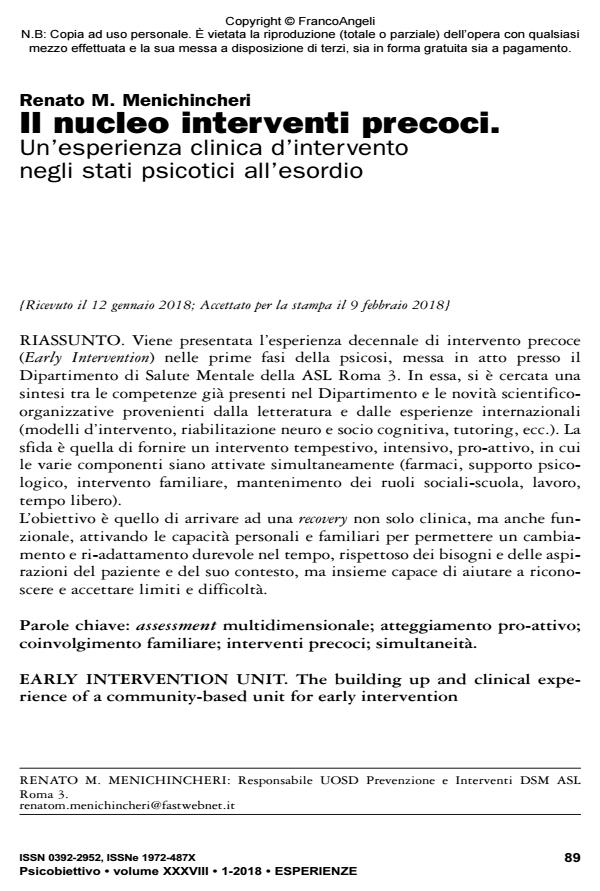Early intervention unit. The building up and clinical experience of a community-based unit for early intervention
Journal title PSICOBIETTIVO
Author/s Renato M. Menichincheri
Publishing Year 2018 Issue 2018/1
Language Italian Pages 19 P. 89-107 File size 131 KB
DOI 10.3280/PSOB2018-001006
DOI is like a bar code for intellectual property: to have more infomation
click here
Below, you can see the article first page
If you want to buy this article in PDF format, you can do it, following the instructions to buy download credits

FrancoAngeli is member of Publishers International Linking Association, Inc (PILA), a not-for-profit association which run the CrossRef service enabling links to and from online scholarly content.
The ten-year experience of Early Intervention is presented in the early stages of psychosis, implemented in the Mental Health Department of the ASL Roma 3. In it, a synthesis was sought between the competences already present in the Department and the scientific and organizational innovations coming from the Literature and from the international experiences (intervention models, neuro and cognitive partner rehabilitation, tutoring, etc.). The challenge is to provide a timely, intensive, pro-active intervention, in which the various components are activated simultaneously (drugs, psychological support, family intervention, maintenance of social roles - school, work, free time). The goal is to achieve not only a clinical recovery but also a functional one, by activating personal and family skills to allow a lasting change and re-adaptation, respectful of the needs and aspirations of the patient and his context, but also to help recognize and accept limits and difficulties.
Keywords: Multidimensional Assessment; Pro-Active Attitude; Family Involvement; Early Interventions; Simultaneity.
Renato M. Menichincheri, Il nucleo interventi precoci. Un’esperienza clinica d’intervento negli stati psicotici all’esordio in "PSICOBIETTIVO" 1/2018, pp 89-107, DOI: 10.3280/PSOB2018-001006